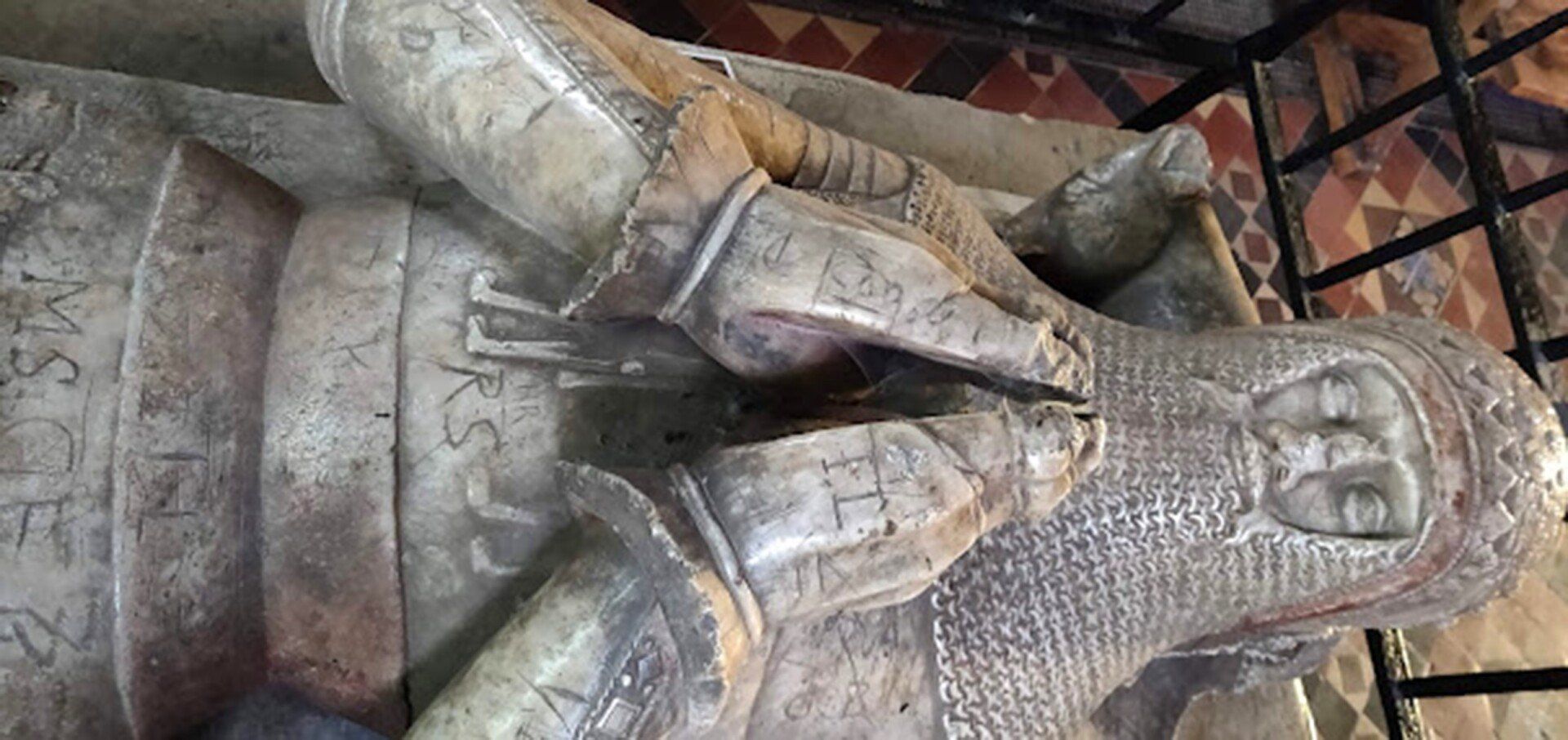Church of St Michael and All Angels
Steventon’s first church was probably late Saxon and built by the Saxon Lord of the Manor. It would have met both his family’s and his tenants’ needs; it would also have been a status symbol.
Almost certainly it is under the foundations of the present church: which has itself gone through a number or alterations and improvements before reaching its present form.
Evolution of the Church
It requires some detective work to discern how the medieval church evolved, but there are hints for both expert and layman to go on. If you enter the church through the south door (the tower door), walk into the nave and turn around, you will see the lower part of an old window opening in the north wall of the tower. This suggests that at one time, the tower was shorter than now, with just two sections: a belfry above a ground floor ringing chamber.
A 13th century south aisle
Now turn into the nave and face east. Have a look at the first pillar on the right. Part of the pier and arch are of a style, which dates to 1220. So even at this early stage, there must have been a south aisle to church, although not the one we see now as this is 14th century. One interpretation of these features is that, in the 13th century, the current south aisle stands on what would have been the main body of the church (the nave), with a two-level tower at its west end. On the north side of the nave was an attached aisle, separated by pillars and arches, part of one having survived to today. This interpretation is by no means certain and there are other features that argue against it. Most of the remaining church is 14th century and described as being of the
Most of the remaining church is 14th century and described as being of the Decorated period,
This includes the main walls, the buttresses, the doors and most of the windows. Clearly, there was a major re-building project going on and it is interesting to speculate who might have been behind it

Sir Hugh de Calveley
One character leaps to mind: that of the military adventurer of The Hundred Years War, Sir Hugh de Calveley, who acquired the lease of the manor from the Abbey of Bec in 1378. Sir Hugh was an extraordinary fellow, highly rewarded for his exploits on behalf of King Edward III and his son The Black Prince, and holding the titles at various times of Captain of Brest, Admiral of the Fleet, and Captain of Calais. He was also a mercenary, leading his own private army, which he hired out to the highest bidder when the king was not in need of his services; this merry ‘band of brothers’ was responsible for the sacking and pillage of wide tracts of France and Spain.
As he came to his later years, his sins must have weighed heavily on his shoulders. To seek salvation from God, he invested heavily in his home church of Bunbury in Cheshire, even endowing it as a collegiate church with its own company of Canons, one of their roles presumably being to pray for Sir Hugh’s soul. Despite his wealth, Sir Hugh was lord of only a handful of manors, and it seems likely that Steventon church was also a beneficiary of his generosity, or perhaps more accurately, of the spoils of war.

Effigy of Sir Hugh Calveley (d.1394), St Boniface’s Church, Bunbury, Cheshire
No evidence of wall paintings
There is one aspect of the 14th century church very obviously missing. It was the custom at this time to paint the walls in a great, flamboyant montage of biblical scenes. Very few examples remain, thanks to the puritanical scrubbing of churches under Oliver Cromwell and even if they actually existed, nothing remains of such paintings in St Michael’s.
Lollard John Tanner of Steventon
Sir Hugh wasn’t the only ‘character’ to be associated with the church. One such was John Tanner of Steventon who, as a Lollard, stood against the style of worship conducted in St Michael’s. He confessed before the Bishop of Salisbury, to having preached heretical views on the nature of the sacraments and against the worship of images.
Fornication
On a far less philosophical level, Mary Moore, spinster of Steventon, also caused offence against the church. In 1757, she was found guilty of fornication with the aptly named Benjamin Fiddler of Farnborough. She was ordered to do penance in St Michael’s church, wearing a large white sheet down to her ankles, a white rod in her hand, standing open faced in the centre of the church and confess her sin, pray for forgiveness and urge her fellow parishioners not to follow her example. It is believed this occasion attracted one of the largest congregations in years. The current vicar has refused to speculate on the re-introduction of such spectacles.